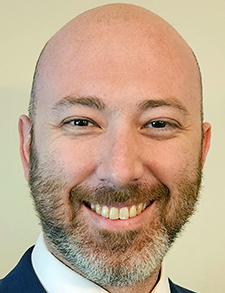 You wouldn’t think COVID-19 would bring us together, not with masks and social distancing, but that’s exactly what this session was about—how four physicians learned to build multicenter research networks and successfully collaborate on four different manuscripts with five more under review, several posters, and this presentation.
You wouldn’t think COVID-19 would bring us together, not with masks and social distancing, but that’s exactly what this session was about—how four physicians learned to build multicenter research networks and successfully collaborate on four different manuscripts with five more under review, several posters, and this presentation.
The session started with a discussion of shared interests and experiences to illustrate how many people in the room shared common goals and could act as potential collaborators. Shared themes included interests in medical education, research, quality improvement, and gender and racial equity. However, when discussing what it would take to make a multiorganizational research collaborative successful, concerns were common. Challenges that were discussed included a lack of administrative support for these initiatives, poor understanding of the institutional review board and its process, lack of research networking, being introverted, crossing time zones, and lack of mentors.
The speakers developed their collaboration using the Hospital Medicine Reengineering Network (HOMERuN) project, which was established in 2011 and serves as a multiorganizational platform to support multicenter research initiatives. In April 2020, a COVID-19 collaborative was formed to share best practices around adaptive staffing and management strategies. Since that time, group members have continued to commit to regular meetings, with each member taking the lead on some kind of research or quality initiative. Using the strengths of the other members as support, they’ve been able to produce significant amounts of research in a short time.
But if using an online platform like HOMERuN isn’t an option or seems daunting, even finding a single person who shares goals and interests can be the start of a fruitful research collaboration. The places to meet have only expanded over the last 20 years, with both face-to-face and virtual options available. People with shared interests are likely to be found at regional and national SHM meetings, community-based sites like local hospitals, HOMERuN committees, the SHM special interest groups, and on other message boards like Reddit or Twitter. Additionally, research groups can and should include nonhospitalists and even nonclinical personnel when appropriate. For example, research about education could include professors from outside of the sphere of medicine, statisticians, pharmacists, residents, or students. Many times we may know people in other spheres that we fail to consider if we limit ourselves to just the field of medicine.
There is no instruction manual for developing a successful research group since so much is dependent on the strengths, skills, and personal dynamics each person brings to the whole. However, there’s generally a uniform progression of group formation and development in a broad sense. Progression usually occurs through Tuckman’s stages of group development: Forming-Storming-Norming-Performing.
Forming, the initial step, is where people may be anxious or curious, but are often reserved, and take time to understand each person’s individual working strategy and personality. This is a good time to identify the group’s strengths: prior experience, training levels, skills, and hopefully a shared passion around a project or theme. It’s also important to determine what data the group has access to and what resources can be leveraged across sites. It is important to determine if there are critical knowledge gaps and plug those if possible. Different disciplines can bring different perspectives and may open doors that otherwise wouldn’t be possible.
Once group formation is complete, there will come a storming phase, people are becoming more comfortable and may start to push against the initial boundaries. This can cause conflict within the group and there may be challenges to the group’s working style or mission. Roles and responsibilities need to be made clear. Continue to meet regularly and don’t forget to set an agenda.
Gradually, the team will move into the norming stage, where differences and conflicts are resolved and team members begin to develop a stronger commitment to the team’s goals. With continued investment, norming will give way to performing, where the team begins to meet its full potential as those initial, bumpy phases give way to structured processes and streamlined interpersonal communication and collaboration.
While there is no roadmap, certain strategies can be applied across teams. It is critical to commit to meeting regularly and setting an agenda. Short-term goals and stretch goals can help the team celebrate short-term wins and look forward to long-term payoffs. Don’t be afraid to start multiple projects, as long as they fit within the scope and goals of the team. Each person can lead something they’re passionate about while leveraging the skills of the other team members. To this end, learn to leverage differences in schedule. Rather than seeing it as a hindrance, use those differences to promote asynchronous work. Additionally, don’t underestimate the importance of technology to help push you forward, including video-conferencing, RedCAP, or whatever other software adjuncts your team can come up with.
The panel concluded by urging us not to stop believing in ourselves and in each other. To continue to innovate, expand, and grow; both those relationships yet unexplored at our home institutions and those as-yet unrealized connections to other like-minded people everywhere.

Dr. Gentile
Dr. Gentile is an academic hospitalist at Corewell Health West in Grand Rapids, Mich. He serves as associate program director for the Corewell Health/Michigan State University internal medicine residency program, directing process and quality improvement and research. He also serves as a section chief for the acute-care medicine division where he leads education, special projects (including the hospitalist medicine procedure service), and research. Disclosure: Dr. Gentile is a member of the Gilead Speakers Bureau.